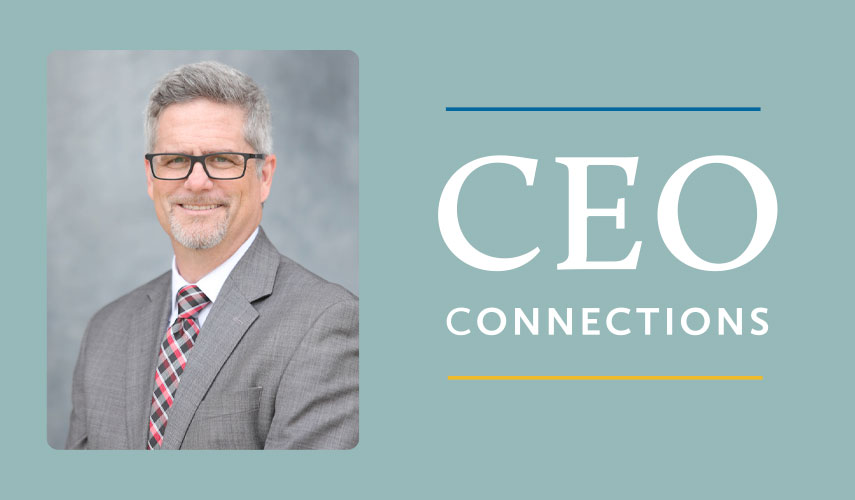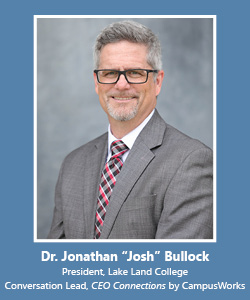
CEO Connections
Closing the Gap in Connectivity for Today’s Rural Communities
By Dr. Jonathan “Josh” Bullock
President, Lake Land College
Conversation Lead, CEO Connections by CampusWorks
The dawn of the 21st century has brought a hyper-connected world, where daily activities are shared in real time via social media channels and live television is available instantaneously with the touch of an app. According to the Federal Communications Commission (FCC), 97% of residents living in urban areas have access to the high-speed, fixed broadband service that makes video chats and Zoom meetings as commonplace as a phone call. By comparison, those living and working in America’s more rural communities tend to experience lagging connections, dropped calls, and endless refresh cycles. High-speed, fixed broadband service is available to only 65 percent of residents in these areas, resulting in swaths of connectivity deserts across our country.
The challenges of limited connectivity came clearly into focus during the pandemic as K-12 and higher education transitioned to remote learning. Students, faculty, and staff in rural settings scrambled to find reliable means of connecting to online learning platforms and remote work tools. Already slow connections nearly came to a halt as networks were taxed to their limits by above-average user volume. Surveys of students and staff at my own rural college paint the picture: only 76.5% of faculty report home internet that’s stable enough to teach remotely while a similar percentage of students (74.5%) indicated connectivity stable enough to maintain academic performance virtually.
Broadband access is an issue for rural educators, but the impact extends far beyond education. Rural businesses and community agencies with limited broadband access are unable to fully participate in the global online marketplace, engage with a remote workforce or capitalize on digital economic platforms.
As community college leaders, we are drivers of economic development for our regions. We deftly finesse the relationships between employers, economic development and community-based organizations, K-12 leaders and elected officials to address community issues in the interest of our students and region. Within that context, what role do rural community college presidents play in the quest to ensure availability of reliable, high-speed internet access for communities?
In recent discussions with broadband leaders, I learned of a successful community broadband initiative in Southwest New Hampshire called the Monadnock Broadband Group. The Group is comprised of municipal officials, practitioners and other stakeholders working together to address broadband issues. Their comprehensive broadband resources and Implementation Guide for coordinating a multi-stakeholder community broadband initiative are valuable illustrations of how communities can collectively address the issue. What can we learn through studying promising practices that will assist rural community college leaders in jump-starting the conversations within our own communities?
As with most infrastructure projects, expanding broadband access is a costly endeavor and will require community college leaders to think creatively about funding sources. Appropriating funds from unanticipated sources, such as federal stimulus dollars, or considering broadband infrastructure to be a bondable long-term capital investment, may be reasonable approaches. What possible solutions emerge to enhance broadband access in rural areas when we consider coupling local funding with the billions in stimulus dollars allocated to state and federal agencies?
The post-pandemic world is just around the corner and the landscape has forever changed. An accelerated reliance on high-speed connectivity will quickly widen the digital divide for rural communities resulting in even greater opportunity gaps. We have an obligation to our students and communities to step up to the plate and address the issue head-on. Are you up for the challenge?


